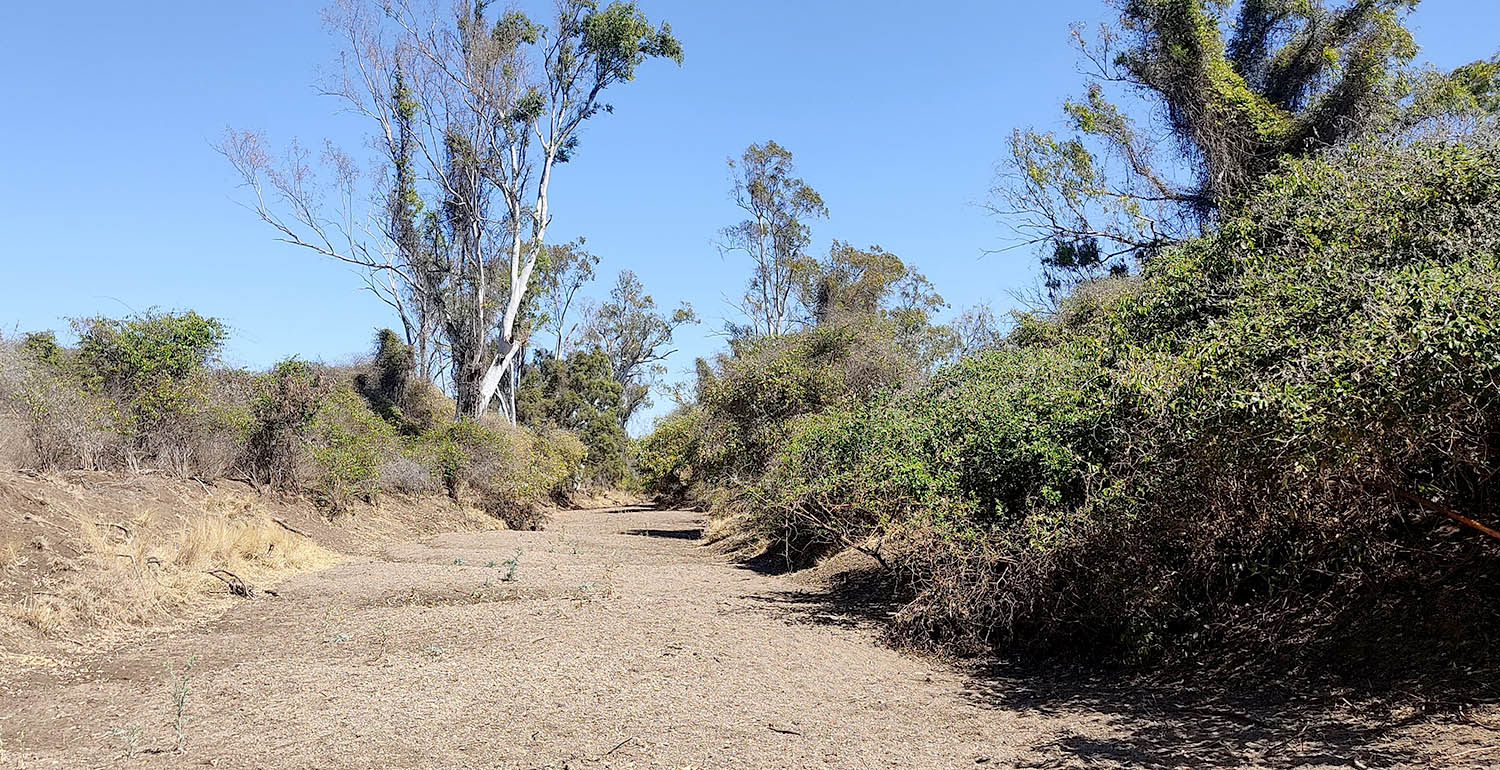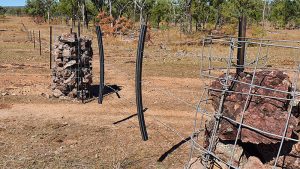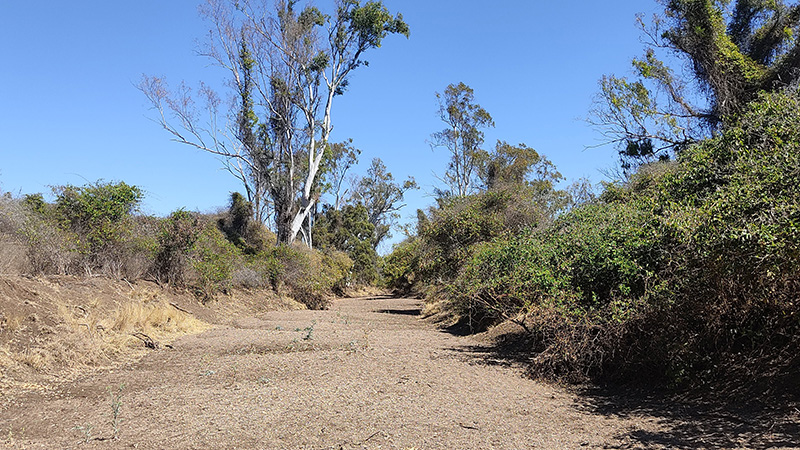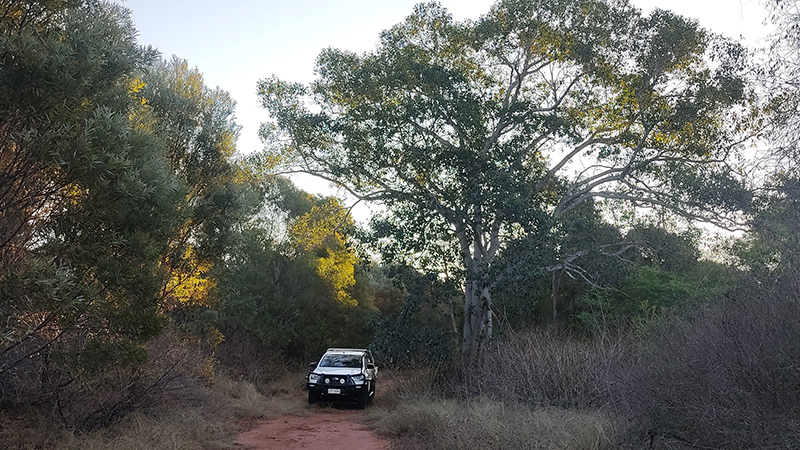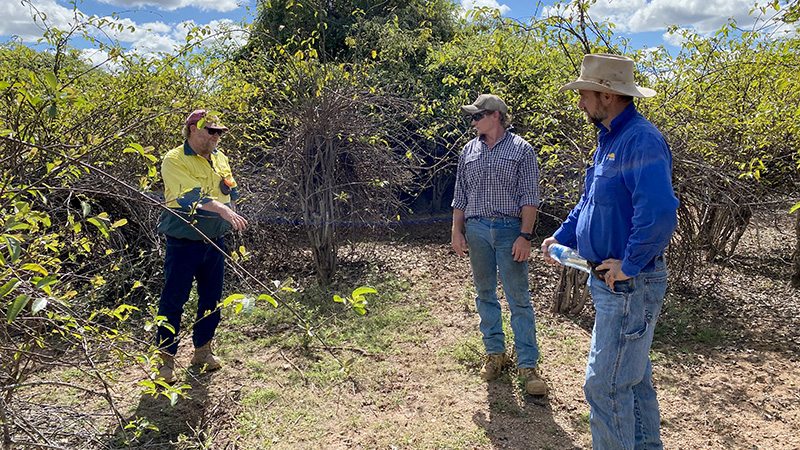LINKING LANDHOLDERS 2
(July 2023 – June 2024)
At a glance
- Reduced weed and pest threat to more than 10,000 ha of frontage country.
- Protected 100 ha of softwood scrub with fencing and fire breaks.
- Delivered at least 60 man hours of education through workshops, and extension to build knowledge, skills and capacity.
- Delivered a Walking The Landscape process with Traditional Owners, incorporating information collaboratively into the property plan.
- Collected BioCAT and LCAT monitoring data (at least before and after) to measure the effect of the project on fauna.
At a glance
- Reduced weed and pest threat to more than 10,000 ha of frontage country.
- Protected 100 ha of softwood scrub with fencing and fire breaks.
- Delivered at least 60 man hours of education through workshops, and extension to build knowledge, skills and capacity.
- Delivered a Walking The Landscape process with Traditional Owners, incorporating information collaboratively into the property plan.
- Collected BioCAT and LCAT monitoring data (at least before and after) to measure the effect of the project on fauna.
Frontage country on Maryvale Station along Maryvale Creek. Infestations of rubbervine and Chinee apple provide shelter for feral pests including pigs and deer.
Building protection for frontage country and softwood scrubs
The Linking Landholders 2 project is continuing the work started in Linking Landholders 1 involving landholders, Traditional Owners and regional partners in the Upper Burdekin.
The Einasleigh Uplands bioregion is a nationally-listed biodiversity hotspot and includes a number of vulnerable ecosystems, most of them on land primarily used for grazing.
Linking Landholders 2 encourages modern “graze, rest, recover” management regimes to benefit the land, the landholder and threatened ecosystems, particularly along creek frontages and around softwood scrubs.
Graziers are being supported to identify values, threat and opportunities in those areas in collaboration with Traditional Owners to identify opportunities for alternative management strategies that will help protect those vulnerable areas.
Linking Landholders 2 aims to take advantage of the increased capacity cluster groups offer to tackle large weed infestations.
Landholders will also be encouraged to build their knowledge and skills through workshops delivered by grazing land management specialists to support better grazing practices to reduce threats to vulnerable areas and increase resilience, profitability and sustainability.
An objective measure of the project’s ecological outcomes will be taken using the Queensland State-wide Indicators Framework (SWIF).
The project offers an opportunity to build the capacity of existing cluster groups to scale up the improvements
in land and vegetation condition in a cost-effective manner.
This project is funded by Queensland Government’s Natural Resources Recovery Program.
RESOURCES
Amelia DownsNQ Dry Tropics’ Linking Landholders to Frontage country project is helping Amelia Downs graziers to restore degraded land along a river front on their 20,000ha property. |
Maryvale CreekMaryvale Creek, winding through three cattle properties, has been a focus for the Linking Landholders to Frontage Country project. This video focuses on the achievements. |
Tackling feral pestsMore than 600 feral animal pests have been culled from cattle properties north of the Basalt Wall near Charters Towers. Pigs, deer and feral horses were removed from properties across two cluster groups. |
Natural balanceJervoise Station grazier Kerry Jonsson is keen to fight a fire that hasn’t started yet. But she knows inevitably it will… in a patch of ecologically valuable softwood scrub on their 27,000ha property. |
Rubbervine battleA rubbervine infestation so thick it threatens to pull down 100-year-old trees will be tackled by a united trio of grazing properties along Maryvale Creek. The battle will be joined with herbicide, fire and a targeted grazing regime. |

